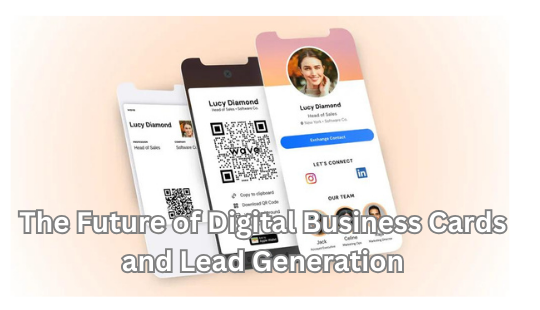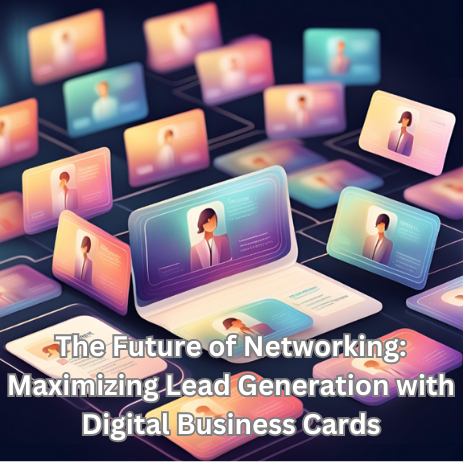An integral part of modern commercial communication is the digital business card. Eclipsing the traditional paper-based business cards, digital business cards now provide a faster, more convenient, and global reach. They not only enhance networking but have also emerged as a powerful tool for lead generation. While initial impressions are impactful for any business, making lasting connections that can be converted into leads is where the true power lies.
It is here that digital business cards exhibit their significance, by providing features like easy information sharing, interactive capabilities, and integration with digital marketing tools. These cards hold considerable importance for businesses looking to stay ahead in the fast-paced world and wishing to tap into an efficient way to manage contacts and foster potential leads.
A digital business card serves the same purpose as its paper counterpart, providing essential contact and business information, but adds an array of digital functionalities. Leveraging technology platforms, these cards are usually designed with interactive features, enabling users to click on web links, email addresses, or phone numbers directly from the card. They can be shared virtually, and stored without the risk of loss or damage.

Comparison Between Traditional Paper-Based Cards and Digital Business Cards
The inception of digital business cards traced its roots back to the early 2000s with the rise of the smartphone era. However, their popularity surged recently, largely driven by the COVID-19 pandemic and the increased need for remote working and networking. Digital business cards have paved the way for a quicker, seamless, and touch-free way to share contact information, marking a new frontier in networking strategies.
While the goal of both types of cards remains the same – conveying contact details – there are stark differences between the two. Traditional paper cards, though classic and personal, can be easily lost, damaged, or cluttered, and also present limitations in terms of available space for information. In contrast, a digital business card offers more flexibility with its digital links, videos, or additional pages, and it’s also eco-friendly. They reduce clutter, offer more durability, usability, and accessibility, which make them a more beneficial solution for today’s digitally-driven world.
The Advantages of Using Digital Business Cards
By scanning a QR code, clicking on a link, or via a specialized app, the card can be easily shared and accessed. It can include not only your basic contact information like name, email address, and phone number but also hyperlinks to your website, social media profiles, and even promotional videos. One benefit of the digital nature is the ability to instantly update information across all cards, ensuring your contacts always have your latest details.
They are eco-friendly, eliminating paper waste associated with traditional business cards. They are always accessible and easy to distribute, whether in person, through social media, or via email. They are interactive, offering clickable links to your business website or other online platforms. They also offer the benefit of analytics, which can offer valuable insight into your contact network.
Using Digital Business Cards for Lead Generation
Lead generation is the process of attracting and converting the interested prospects into someone who has shown interest in your company’s product or service. In the vast sea of information, getting your service or product in front of the right eyes is challenging. This is where digital business cards come in. A digital business card, with its ability to incorporate more than just contact information, acts as a gateway to your company’s larger online presence. It helps in creating the initial interest and catching the attention of potential leads. Some advice for beginners is to plan how you would like to represent what your services have to offer, and to stay updated on business trends as they continuously fluctuate..
Create a Unique Design to Represent Your Brand
An excellent digital business card starts with a great design – clear, professional, and reflective of your brand. Upon creation, actively distribute your digital business card at networking events, in your email signature, and on social media. To convert this reach into leads, you need to provide value, perhaps in the form of useful content or special offers, on the platforms you linked on your card.
Take Advantage of Business Analytics
Make use of the analytics offered by digital business card platforms. Track where your leads are coming from, and fine-tune your strategy accordingly. The effectiveness of a digital business card not just lies in its innovative format, but how you leverage it to generate leads effectively.

The Future of Digital Business Cards and Lead Generation
As per industry experts, the trend of digital business cards is not fleeting but is set to continually grow and transform networking strategies. Given the increasing importance of digital identities and eco-conscious solutions, this shift towards digital cards is most likely permanent. With the integration of more sophisticated technologies such as artificial intelligence and augmented reality, digital business cards are poised to become even more interactive and dynamic, offering innovative ways to connect with prospective leads.
Innovations to expect in the future include the incorporation of real-time updates, advanced personalization, optimized analytics, and voice-activated functionalities. Businesses can benefit from such improvements by staying informed about new feature updates and being willing to adapt accordingly. Companies should also plan for continuous learning and adaptability as part of their strategy. Investing in appropriate technologies and focusing on building digital marketing skills within the team will be key to leveraging the full potential of digital business cards in lead generation.
Conclusion
The shift towards digital business cards presents immense potential for effective and innovative lead generation. Their interactive features, versatility, and the ability to seamlessly integrate within the digital ecosystem make them a game-changer in modern business networking. As the trend of digital business cards accelerates, businesses of all sizes must embrace this technology to stay competitive and capitalize on its potential in catalyzing their growth.
